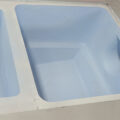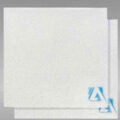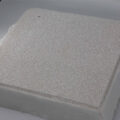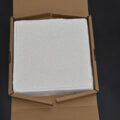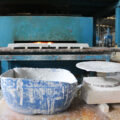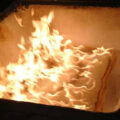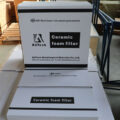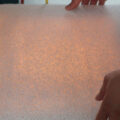The Foam Ceramic Filter for Foundry is installed in the CFF filter box between the furnace mouth and the distributing launder. The filter box is made of refractory material. It can pass thousands of times of chilling and heating without cracking. It has the advantages of high strength and good insulation performance. It is currently the best material for making filter boxes and launders. The closer the filter box is to the splitter plate, the better, because this can shorten the flow distance of the molten aluminum after filtration and reduce or avoid the re-generation of oxides.
The molten aluminum flows out of the furnace mouth, passes through the CFF filter box, and then flows into the splitter plate through the launder.
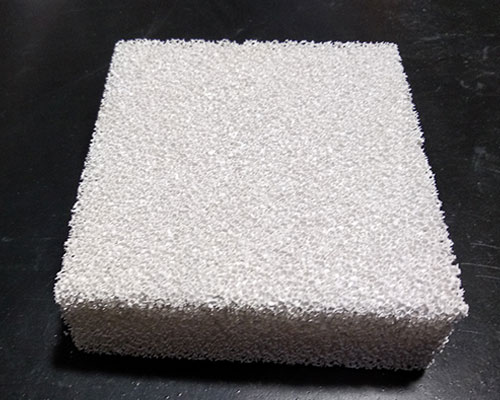
When the filter device is started, the drop before and after the melt filtration is about 50mm. With the extension of the filtration time, the inclusions on the surface of the filter plate and the hole wall increase, the filter flow rate decreases, and the front and rear drop increases. At the end of the casting, the drop increases to 60 ~120mm. The selection of filter plate must be based on the flow of molten aluminum, and secondly, the cleanliness of the melt, the highest content of inclusions and the total throughput of the melt should be considered.
The filtering effect of the ceramic foam filter plate is mainly guaranteed by its size and porosity. The larger the pores of the Foam Ceramic Filter for Foundry, the worse the slag removal effect. For aluminum castings with strict requirements, a filter plate with small pores should be selected.
When designing the filter device, according to the specifications of the selected filter plate, and considering the drop of the furnace mouth and the splitter plate, it must be ensured that the filter plate is immersed in the molten aluminum during the melt casting. In addition, it must be considered that the installation and disassembly are safe and convenient, and the aluminum liquid in the filter box can be completely drained after the melt is cast.
Practice has proved that the ceramic foam filter is the most effective tool for removing oxide inclusions in aluminum melt. General fiber filtration can only remove large inclusions, while the foam ceramic filter plate can simultaneously filter out large inclusions and small inclusions.

